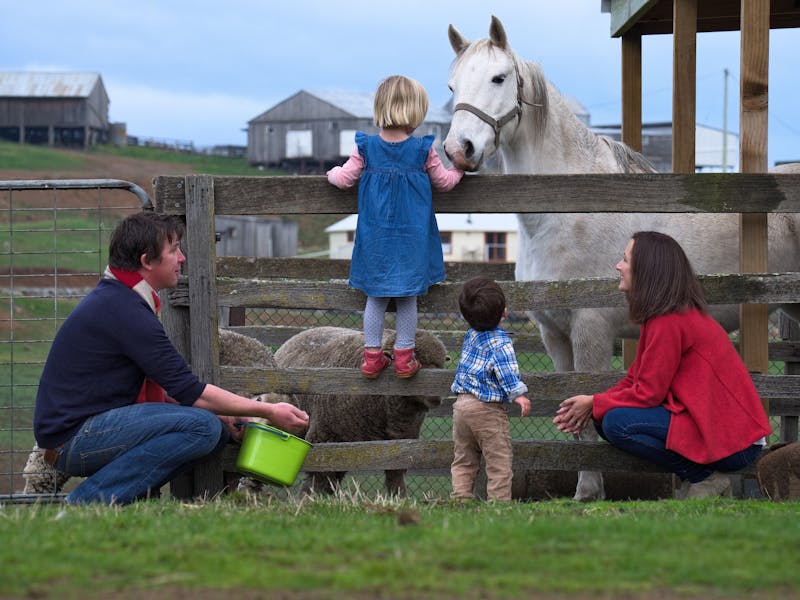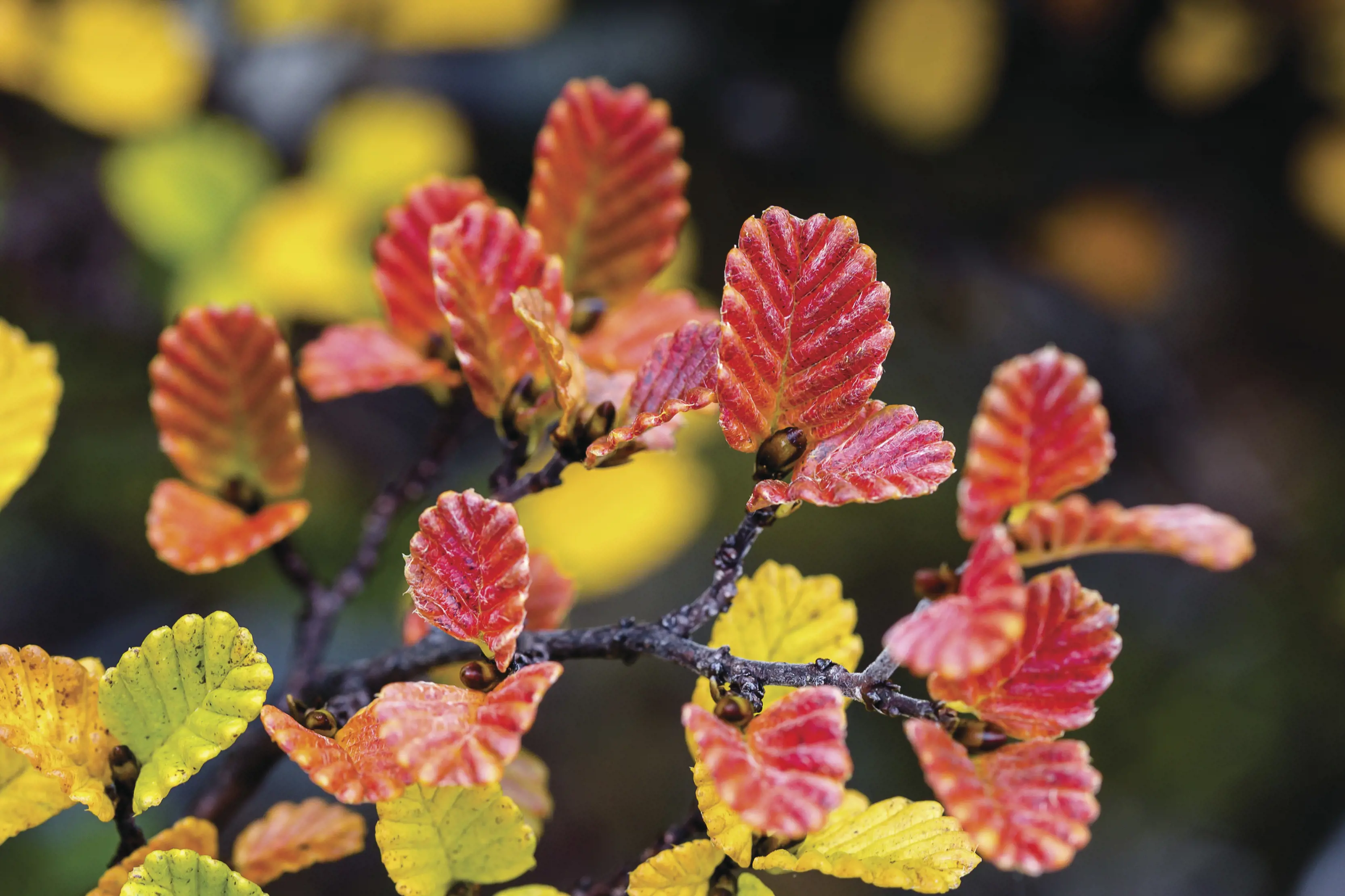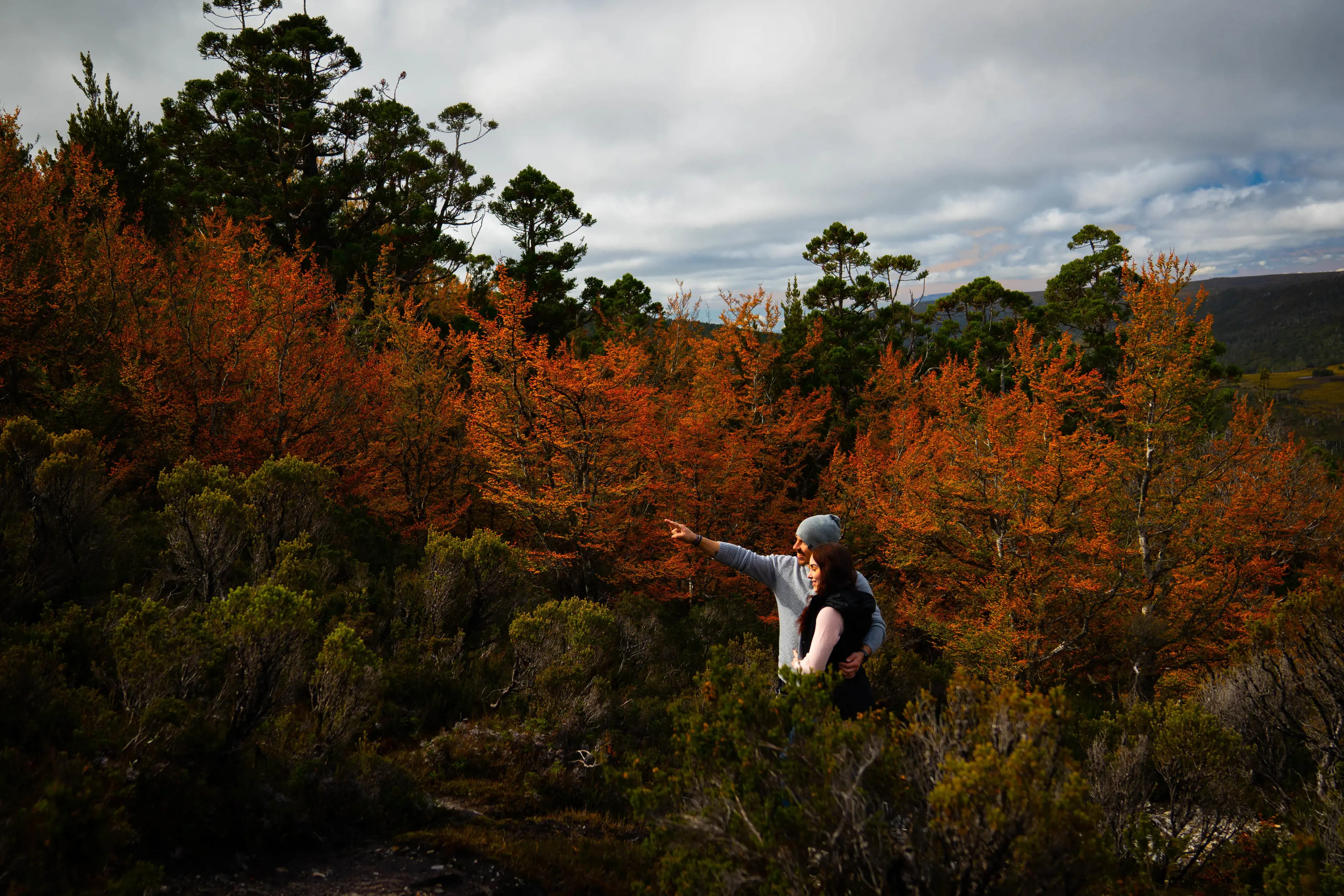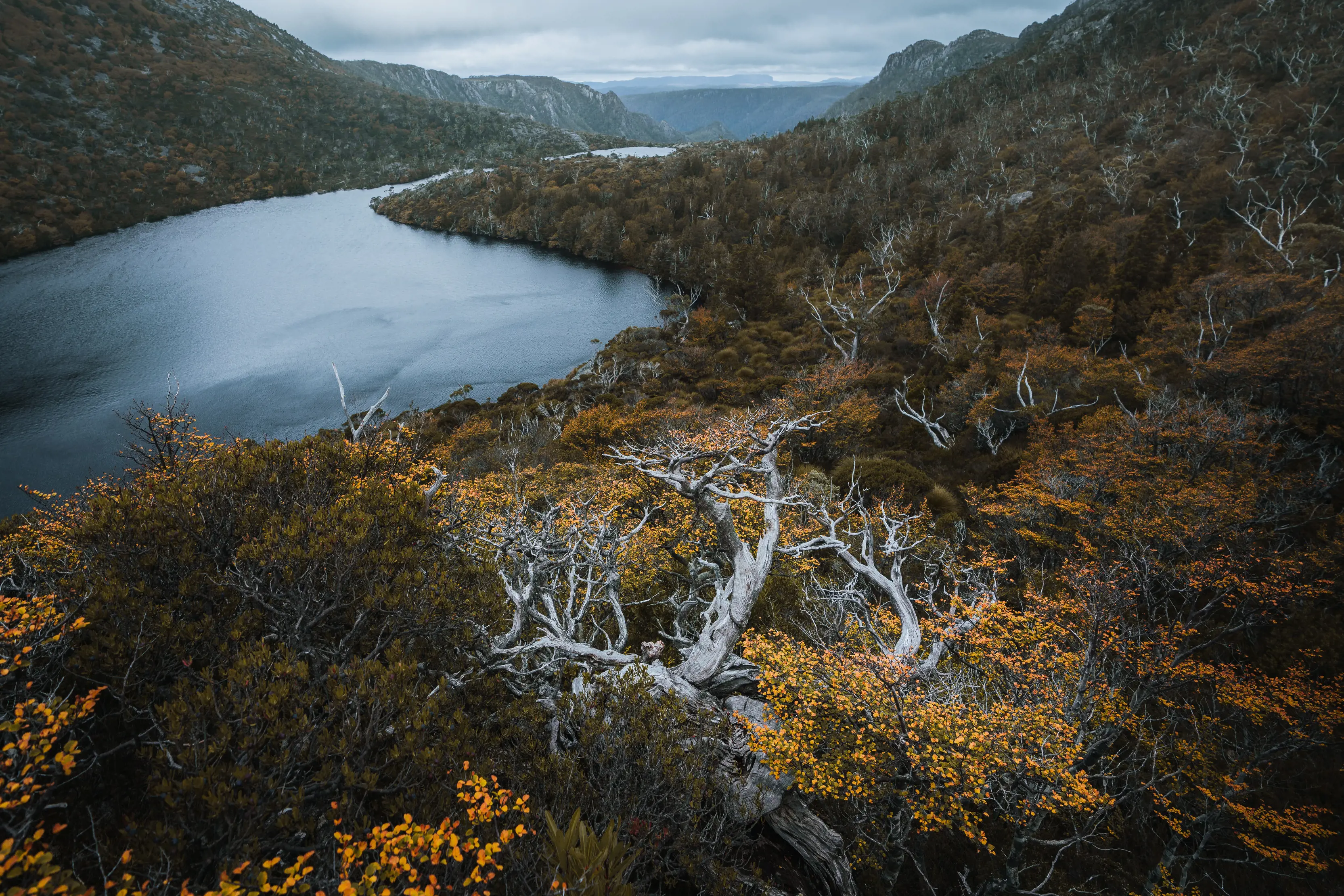
It’s an essential pilgrimage in Tasmania – a seasonal phenomenon that the locals call “the turning of the fagus”.
In late April and May, Tasmania’s only winter-deciduous native tree turns on its autumn show, triggering a pilgrimage to see entire hillsides ablaze in shades of rust, orange and gold.
The fagus hasn’t quite achieved the renown of other endemic Tasmanian plants, such as the Huon pine, yet this prehistoric survivor of the Gondwana era is remarkable.
It goes by a few names: fagus, Nothofagus gunnii, deciduous beech, and tanglefoot, for its low, twisted branches growing in thickets that can trip bushwalkers. It’s one of only a handful of native deciduous species in Australia.
The unique Tasmanian fagus thrives in cool, wet locations, typically above 800m. For most of the year it’s a tree you have to go looking for, but in autumn its crinkle-cut leaves change colour and it announces itself in flamboyant style.

When it turns
Exactly when the fagus starts to turn depends on the weather, although Anzac Day is commonly considered a good marker. Steve Leonard, a senior ecologist with Natural Resources and Environment Tasmania, says the season is actually longer than most people realise, as it takes time for the leaves to move through a spectrum of colours.
“They usually start to turn yellow around March, then progress to orange,” he says. “If it’s particularly frosty they may turn a deep red, before shifting to a rusty brown and finally falling off. It is not unusual to see one plant exhibit the full spectrum of colours at the one time.”

Where it turns
Mount Field National Park and the northern end of Cradle Mountain-Lake St Clair National Park have reliable and spectacular displays of autumnal fagus.
At Cradle Mountain, take the loop track around Dove Lake (2-3hr, 6km) and walk through stands of fagus. An even easier option is Weindorfers Forest Walk (20min circuit, 750m). Or spend a couple of hours walking to Crater Lake, to see sheer slopes plummet into the lake, dressed in flaming orange, red and gold leaves.
At Mount Field National Park, take the Lake Dobson Road and you’ll see patches of fagus out the window. The greatest of the pilgrimages is to the Tarn Shelf, a bench of land hanging off the Rodway Range at the heart of the national park – think glacial lakes fringed by autumn confetti. Around Lake Fenton, there’s also an observation deck and the option to venture off to boulder fields from the lake’s car park.
How to spot the fagus
Fagus loves damp, cool locations, so be sure to wear your finest autumn-hued beanie and plenty of layers.
Fagus-spotting is also a chance to explore some of Tasmania’s oldest ecosystems. Fagus often keeps company with other ancient Gondwanan species, such as pencil pines, which haven’t evolved for 35 million years. They are survivors from a time when Tasmania was a very different place: part of the supercontinent of Gondwana, situated about 20 degrees further south, and receiving little sunlight for several months of the year.
“You are looking back through deep time to an environment that is potentially similar to when dinosaurs were roaming Antarctica and Australia,” Leonard says.
Don’t rush the experience. Take time to sit quietly in the landscape and see if you can spot some of the animals that make their home in fagus. Growing in dense thickets, provides shelter for a wide range of insects and birds including thornbills, scrub wrens and scrub tits.
Although fagus has proven itself a survivor, it’s particularly vulnerable to fire. It evolved in a humid climate very different to today’s conditions, so it lacks the distinctive trait of many Australian species to regenerate after fire.
Keep an eye on Tasmania Parks and Wildlife Service's website for fagus news and events. The annual two-week Festival of Fagus is also held around this time in Cradle Mountain.
Missed the turning of the fagus? Don’t fret - Leonard says this remarkable plant is worth seeing in any season.
“In summer it has this vibrant green foliage that is really distinctive in the landscape – you can see it a mile off, as far as the next mountainside,” he says. “In winter, those tangled interlocking branches create really interesting forms, like sculpture. It really is beautiful year-round.”
Catch the turning of the fagus from late April to May.



